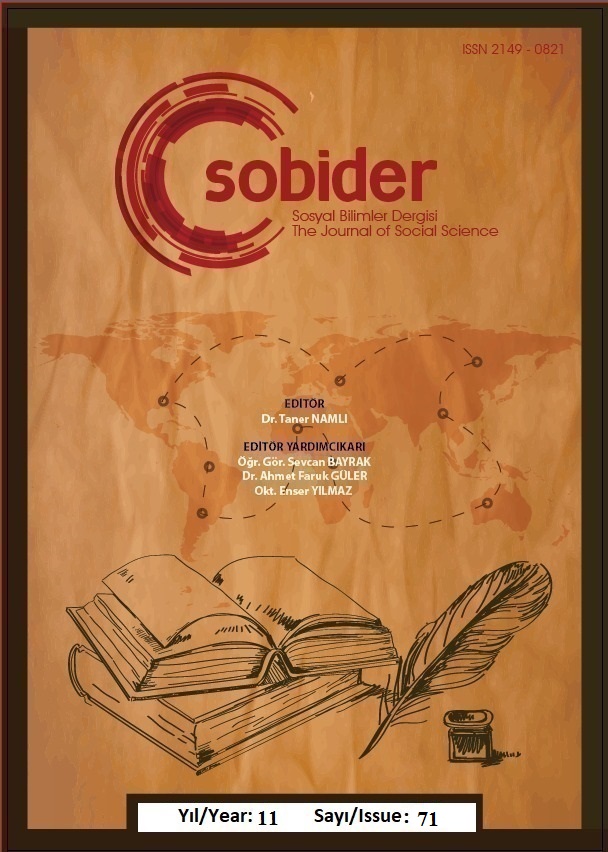Author :
Abstract
Makalede bedii eserlere şerh yapma kavramı, onun bir iri hacimli eserin bir kitap halinde şerh edilmesi, nazmın belli bir türünde yazılan esere şerh yapma gibi kendine has geleneklerinin mevcut olduğu söz konusu olmuştur. Bununla birlikte, onda “tahlil”, “telkin”, “tefsir” va “tevil” gibi terimlerin bir kaç niteliklerine göre “şerh”e yakın anlamda kollanması, onlar arasındaki ortaklığın Rahmani kelamı ya da bedii, bilimsel, felsefi, dini, tasavvufi eserleri bilim dalı uzmanları, iri araştırmacı bilginler tarafından okuyucuya anlatmada tezahür etilmesi, gerçi bazen bazi incelemelerde “ayet şerhi” kelime birliği kollanılsa da, onu ayetin izahi, tefsiri anlamında kabuk etmenin uygunluğu hem de aynı kavramların kendine haslıkları kaynaklara dayanılmış halde belirletilmiştir. Şerhde tahlil ve telkine has netelikler, mevcüt olsa da, ama onun bir araştırma ya da telkin sayılmaması, tehlil, kendi kapsamının genişliği, bilim dalı uzmanı ya da kamuya tahmin edilme karakteri ve bu gibi nitelikleriyle onun şerhten fark edilmesi, şerhte çoğunlukla okuyucuya anlanması zor olan ilahi-irfani kavram ve deyimler, temsil ve timsal gibileri basit bir biçimde anlatmanın itibara alınması, aynı cihetine göre şerhin komuya tahmil edilmesi gibiler tahlillere dayanarak açıklanmıştır.
Keywords
Abstract
The article discusses the concept of interpretation of a work of art, its unique traditions, such as the interpretation of a large work in the form of a book, the completion of comments on a work of a particular genre of lyrical type. It includes the use of terms such as “tahlil” (“analysis”), “talqin” (“interpretation”), “tafsir” (“decoding”) and “taawil” (“denomination”) in the sense of “commentary”. The fact that Divine word or artistic, scientific, philosophical, religious manifestation of the mystical works are explained to the reader by the experts in the field, and the major researchers, although in some places the phrase "verse commentary" is used, it is expedient to understand it in the sense of interpretation of the verse, and the specificity of the same concepts determined based on sources. Although there are elements characteristic of analysis in the review, but it is not considered research or interpretation, the analysis differs from the review by the breadth of its scope, the nature of being intended for the specialist or the public, and similar classifications, and the review is often understood by the reader. complex theological-mystical concepts and phrases, metaphors and similes, etc., are revealed on the basis of analyzes such as the simple interpretation of them, and, accordingly, the commentary is directed to the public.





